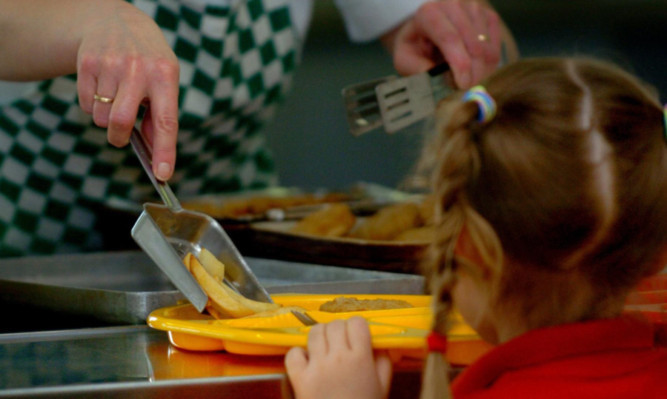Pupils in Tayside are being fed chicken imported from Thailand for their dinner while jailed criminals enjoy fresh meat from a Scottish “master butcher”.
An investigation by The Courier shows that just over 14% of the grade A, indoor-reared poultry served up at lunchtime is sourced in the UK and none of it is Scottish.
Tayside Contracts, which provides the school meals service across Angus, Dundee City and Perth and Kinross councils, said the vast majority of its indoor reared chicken is imported from the Netherlands and Thailand.
That is in stark contrast to the Scottish Prison Service which has its fresh meat supplied by “Scotland’s top catering butcher”, McLays Ltd.
Phil Brooke, of Compassion in World Farming’s research and education department, said: “Children care about animals and Scottish children deserve food with high-welfare quality.
“Councils should be looking for organic, free range or higher welfare suppliers, such as those which are RSPCA Freedom Food certified. It is deeply disappointing that it seems that the vast majority of the chickens served to Scottish children have been reared under intensive conditions.”
Chicken in Fife schools comes from a combination of the UK and Holland, but again none of it is Scottish, while 90% of Stirling’s youngsters are being fed poultry sourced in Scotland, with the rest British.
Stirling Council has also obtained the Soil Association Food for Life Bronze level catering mark, meaning all poultry products meet British Welfare Standards as a minimum requirement.
The Courier also asked about beef and pork products in local schools, the vast majority of which is sourced in the UK.
Almost all beef used in children’s lunches is Scottish although some in Fife is imported from Ireland and none of the cattle or pigs used came from outside the EU.
Tayside Contracts managing director Iain Waddell said it sourced its meat through the Scottish Excel Contract and tried to find local foods where possible.
Some 75% of beef in Tayside schools is Scottish, with the rest from other parts of the UK. More than three-quarters of pork is from Scotland, with the rest from the “UK and EU”.
Mr Waddell said: “We do everything we can to supply locally as an organisation. Some things are very difficult because you have got the big supermarkets cornering aspects of the market and they seem to get priority.
“I’m surprised at the difference (with Fife and Stirling). It would very much depend on the products we are all actually purchasing. We do everything we can to purchase from Scotland if we can and the UK if not.”
Scottish Greens food spokeswoman Alison Johnstone MSP said: “School meals are so important we must aim for local, high-quality food on our children’s plates as standard.”
Scottish Conservative MSP Alex Fergusson said: “If the local prison service can source top-quality local food for its prisoners, then there is no reason why Tayside Contracts shouldn’t do the same for the schoolchildren for whom it provides.”
A Scottish Government spokesman said: “While procurement decisions are entirely a matter for local authorities, the Scottish Government provides guidance setting out nutritional requirements and quality standards for school meals, and we expect both to be observed.
“Within the boundaries of strict EU rules, the Scottish Government strongly encourages local produce to be procured wherever commercially possible.”
